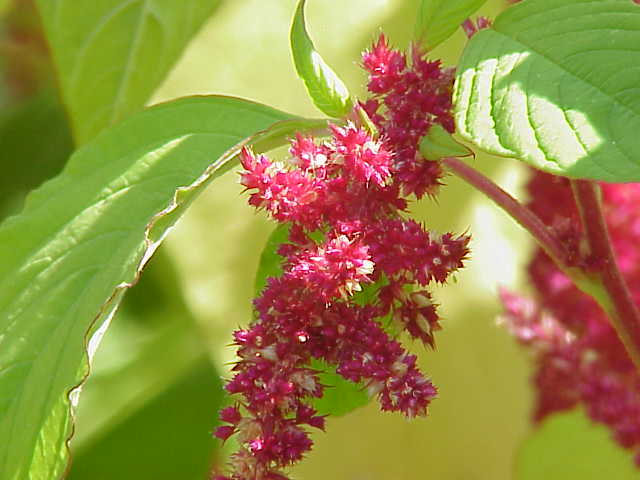Difference between revisions of "Template:EWP/es"
(Created page with "Plantilla: EWP") |
(Created page with "</noinclude> <noinclude>Utilización: <nowiki>{{EWP</nowiki> | name = Nombre común | binomial = Género especie, o sólo género (opcional) | image = Imagen principal |...") |
||
| Line 15: | Line 15: | ||
}}</includeonly> | }}</includeonly> | ||
<noinclude>[[Category:AY Honors/Transcluded Modules{{GetLangSuffix}}|{{SUBPAGENAME}}]]</noinclude> | <noinclude>[[Category:AY Honors/Transcluded Modules{{GetLangSuffix}}|{{SUBPAGENAME}}]]</noinclude> | ||
| − | <noinclude> | + | <noinclude></noinclude> |
| − | </noinclude> | + | <noinclude>Utilización: |
| − | <noinclude> | ||
<nowiki>{{EWP</nowiki> | <nowiki>{{EWP</nowiki> | ||
| − | | name = | + | | name = Nombre común |
| − | | binomial = | + | | binomial = Género especie, o sólo género (opcional) |
| − | | image = | + | | image = Imagen principal |
| − | | image_caption = ( | + | | image_caption = subtítulo (opcional) |
| − | | image2 = | + | | image2 = Seguna imagen (opcional) |
| − | | image_width = 300px ( | + | | image_width = 300px (condición base, aplica a ambas imagenes) |
| − | | range = | + | | range = dónde se encuentra |
| − | | description = | + | | description = Descripción física de la planta |
| − | | use = | + | | use = Cómo se utiliza la planta como comestible |
| − | | warning = ( | + | | warning = (opcional) hacer una lista de partes venenosas de la planta (si hay) |
| − | + | además de otras plantas venenosas que puedan ser identificadas equivocadamente como esta | |
| − | | potherb = y ( | + | | potherb = y (si la planta puede ser usada como una hierba aromática, ponga «y») |
| − | | salad = y ( | + | | salad = y (si la planta puede ser usada en una ensalada, ponga «y») |
| − | | tuber = y ( | + | | tuber = y (si el tubérculo de la planta es comestible, ponga «y») |
| − | | beverage = y ( | + | | beverage = y (si la planta puede ser usada como una bebida, ponga «y») |
| − | | boil = y ( | + | | boil = y (si la planta se prepara por medio de hervir, ponga «y») |
| − | | fry = y ( | + | | fry = y (si la planta se prepara por medio de freír, ponga «y») |
| − | | raw = y ( | + | | raw = y (si la planta se puede comer cruda, ponga «y») |
| − | | roast = y ( | + | | roast = y (si la planta se prepara por medio asar, ponga «y») |
| − | | bake = y ( | + | | bake = y (si la planta se prepara por medio de hornear, ponga «y») |
<nowiki>}}</nowiki> | <nowiki>}}</nowiki> | ||
| − | |||
<div lang="en" dir="ltr" class="mw-content-ltr"> | <div lang="en" dir="ltr" class="mw-content-ltr"> | ||
Revision as of 21:29, 26 July 2022
Utilización:
{{EWP
| name = Nombre común
| binomial = Género especie, o sólo género (opcional)
| image = Imagen principal
| image_caption = subtítulo (opcional)
| image2 = Seguna imagen (opcional)
| image_width = 300px (condición base, aplica a ambas imagenes)
| range = dónde se encuentra
| description = Descripción física de la planta
| use = Cómo se utiliza la planta como comestible
| warning = (opcional) hacer una lista de partes venenosas de la planta (si hay)
además de otras plantas venenosas que puedan ser identificadas equivocadamente como esta
| potherb = y (si la planta puede ser usada como una hierba aromática, ponga «y»)
| salad = y (si la planta puede ser usada en una ensalada, ponga «y»)
| tuber = y (si el tubérculo de la planta es comestible, ponga «y»)
| beverage = y (si la planta puede ser usada como una bebida, ponga «y»)
| boil = y (si la planta se prepara por medio de hervir, ponga «y»)
| fry = y (si la planta se prepara por medio de freír, ponga «y»)
| raw = y (si la planta se puede comer cruda, ponga «y»)
| roast = y (si la planta se prepara por medio asar, ponga «y»)
| bake = y (si la planta se prepara por medio de hornear, ponga «y»)
}}
Example:
Amaranth
Descripción: Amaranth, is a cosmopolitan genus of annual or short-lived perennial plants. Catkin-like cymes of densely packed flowers grow in summer or autumn. Approximately 60 species are recognized, with inflorescences and foliage ranging from purple and red to green or gold.
Dónde se encuentra: Worldwide in temperate and tropical zones
Disponibilidad: Summer, Fall
Uso: Amaranth species are cultivated and consumed as a leaf vegetable in many parts of the world. The seeds can be collected and used as a grain (or ground into flour).
To maximise seed harvest, shake the near-mature seed heads into a paper bag or onto a canvas. If the growing area is large, it is faster to cut the heads all at once when most of the seeds are ripe. The fully ripened heads tend to drop their seeds.
Dry for a week and thresh the heads with gloved hands or feet on canvas as the chaff is somewhat prickly. The seeds may be lost when winnowing because the chaff and seeds are of similar size and the seeds are of a light weight. If you heap uncleaned seeds in a bowl and toss them, the light debris will concentrate on the top and can be blown away. Repeat this until only seeds remain.

